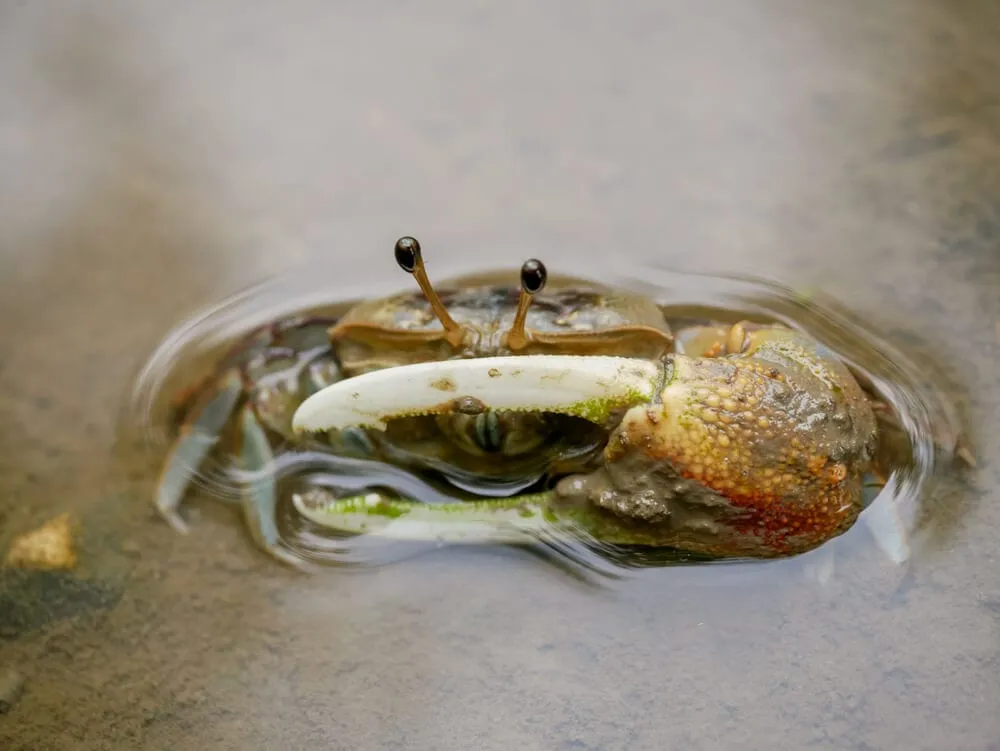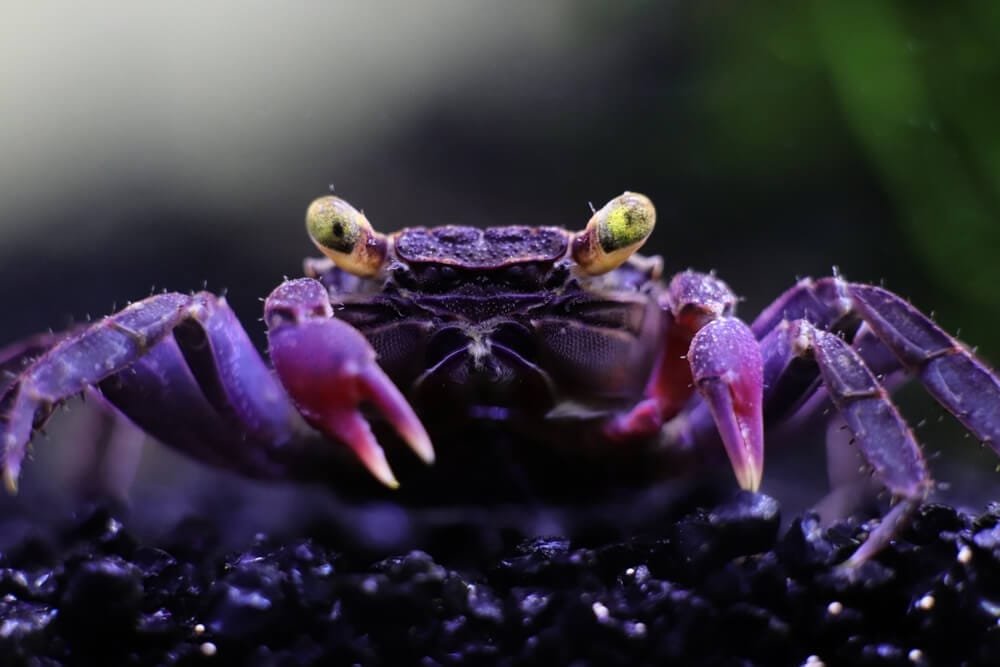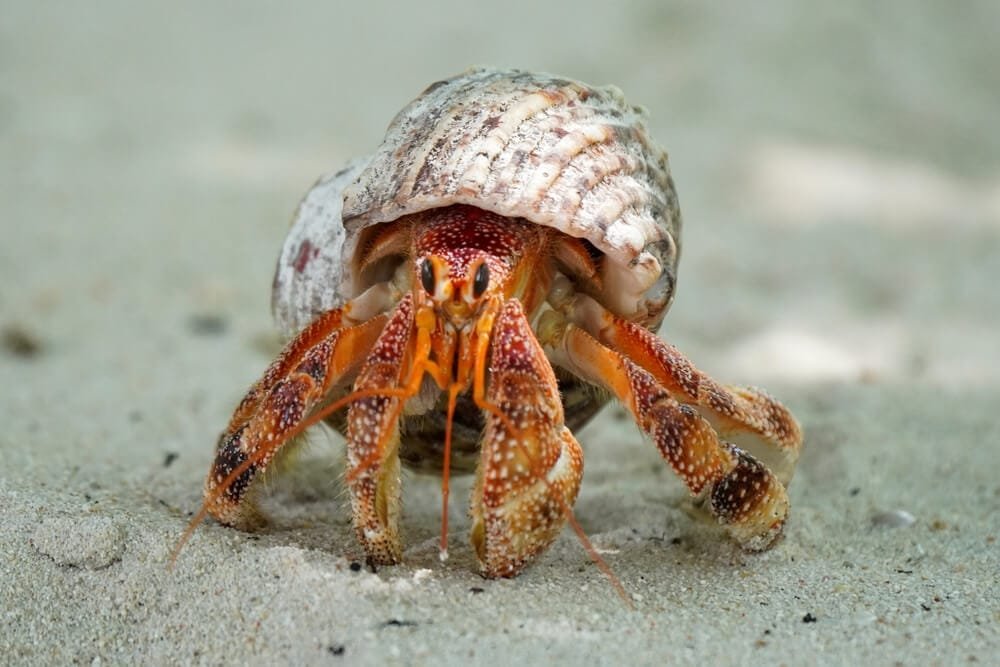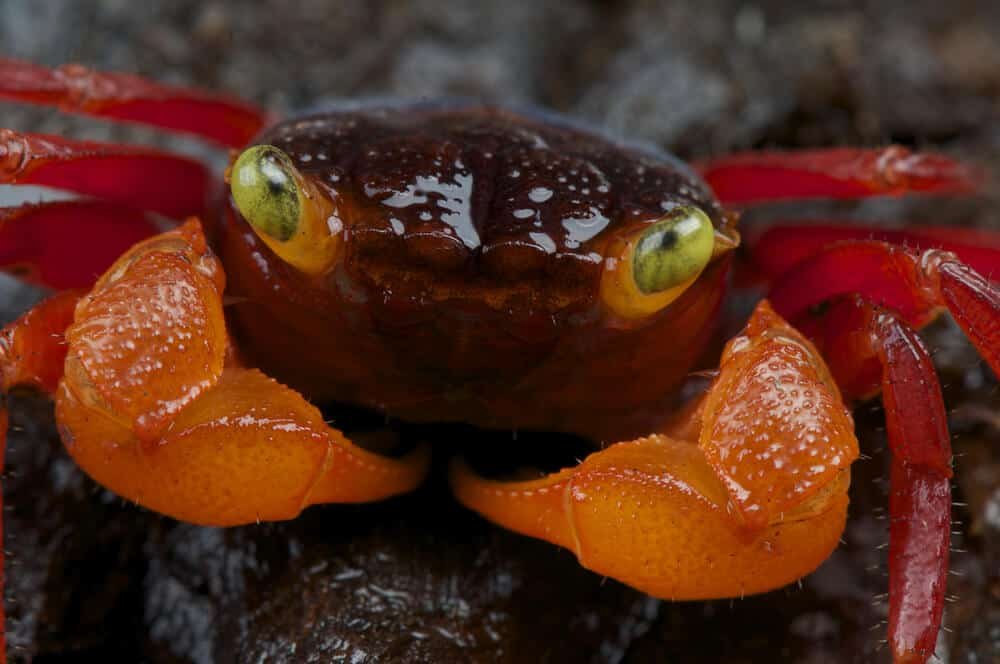Panther Crabs Unveiled: Keeping and Caring for Your Crustaceans
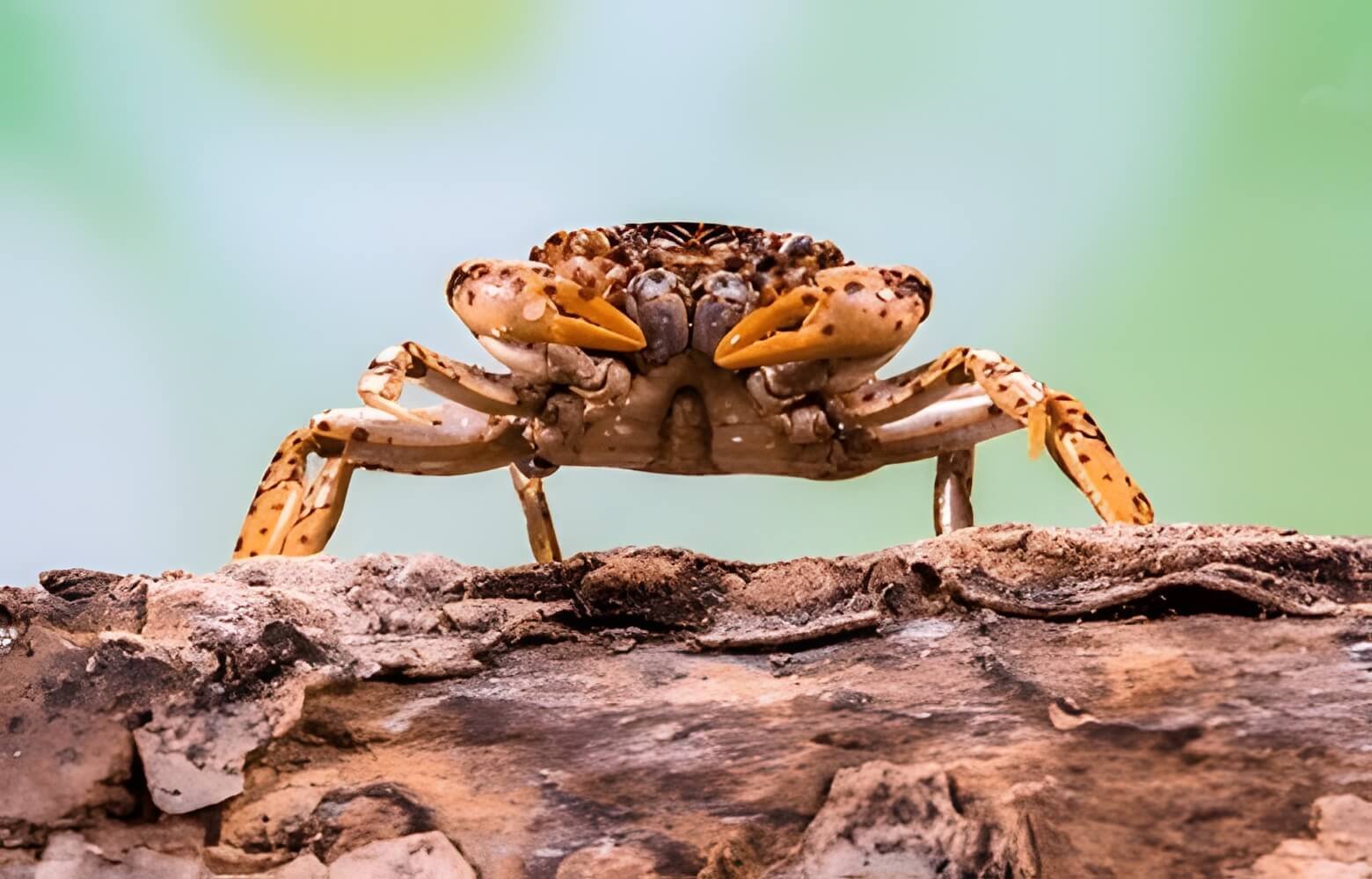
Imagine walking along a pristine, sandy beach with the warm sun on your face and the gentle sound of waves crashing in the distance. Suddenly, you come across a fascinating creature scuttling across the shore – the Panther Crab. With its striped black and orange shell, this unique crustacean is a true marvel of nature. But what exactly is the story behind this captivating creature? Stay tuned to discover the hidden secrets and remarkable features of the Panther Crab.
Physical Appearance
Size
The Panther Crab is a medium-sized freshwater crab that can grow up to 2-3 inches in size. As juveniles, they are typically around 1 inch in size, and they continue to grow as they mature. This makes them an ideal choice for hobbyists who prefer keeping smaller aquatic organisms.
Coloration
One of the most striking features of the Panther Crab is its vibrant coloration. They have a deep black body with pale yellow or white spots covering their shell, resembling the patterns of a panther. These contrasting colors add a captivating visual element to any aquarium and make the Panther Crab stand out among other aquatic inhabitants.
Body Structure
The body structure of the Panther Crab is well-suited for their scavenging nature. They have a sturdy exoskeleton that protects their internal organs, and their sharp claws allow them to catch prey and defend themselves if necessary. The combination of a compact body and strong limbs gives them great agility, enabling them to navigate through various terrains in their natural habitat.
Habitat
Natural Range
Panther Crabs are native to the rivers and streams of Southeast Asia, particularly in countries such as Thailand, Malaysia, and Indonesia. They are primarily found in freshwater environments with slow-moving or stagnant water, such as swamps and marshes. These crabs are adapted to both terrestrial and aquatic life, and they display different behaviors depending on their location within the habitat.
Aquarium Setup
To recreate a suitable habitat for Panther Crabs in an aquarium, it is important to replicate their natural environment as closely as possible. This can be achieved by providing them with a generous amount of space, as they are known to be active creatures. A tank with a capacity of at least 10 gallons should be sufficient for a single Panther Crab. It’s important to maintain a consistent water temperature of around 75-85°F and ensure good water quality. Adding aquatic plants, rocks, and driftwood can provide hiding places and create a visually appealing setup.
Behavior
Solitary Nature
Panther Crabs are primarily solitary creatures and prefer to have their own space. They are known to exhibit territorial behavior and may become aggressive towards other crabs if they feel their space is being invaded. It is recommended to keep Panther Crabs individually or in pairs to avoid conflicts.
Feeding Habits
In the wild, Panther Crabs are opportunistic feeders and will scavenge for their food. In captivity, they can be fed a varied diet consisting of commercially available crab and fish-based food, as well as live or frozen meaty foods like bloodworms, brine shrimp, and small crustaceans. Offering a mix of these food sources will ensure that they receive a balanced and nutritious diet.
Territorial Behavior
Panther Crabs can display territorial behavior, particularly when they reach adulthood. They may claim certain areas within the aquarium as their territory and become defensive if other aquarium inhabitants, such as fish or smaller invertebrates, encroach upon their space. Providing sufficient hiding places and maintaining enough territory for each crab can help minimize territorial disputes.
Life Cycle
Reproduction
Panther Crabs reproduce through sexual reproduction, with males and females coming together to mate. Mating typically occurs during the rainy season when water levels rise, signaling the ideal conditions for reproduction. Male crabs will perform elaborate courtship displays to attract females, including waving their claws and performing intricate movements.
Egg Development
Once the female Panther Crab is fertilized, she carries the eggs under her abdomen. The eggs will hatch after approximately 3-4 weeks, depending on water temperature and other environmental factors. During this time, the female will carefully groom and protect the developing eggs, ensuring their safety until they hatch.
Growth and Development
After hatching, the young Panther Crabs will undergo several molts as they grow. Molting is a process in which the crab sheds its old exoskeleton and grows a new one. Each molt signifies growth, and the newly emerged crab will be slightly larger than the previous molt. This growth and development process continues until the crabs reach their adult size.
Diet
Carnivorous Nature
Panther Crabs are carnivorous creatures, meaning their diet consists primarily of animal matter. In the wild, they feed on various small invertebrates, including insects, worms, crustaceans, and even dead animals. It is important to provide them with a diet that replicates their natural feeding behavior to ensure their nutritional needs are met.
Prey Selection
In captivity, Panther Crabs can be fed a variety of meaty foods. This can include commercially available crab or fish-based pellets, frozen or live foods such as bloodworms, brine shrimp, and daphnia. Feeding them a mix of these foods will help provide a balanced diet rich in proteins and nutrients.
Compatibility
Tankmates
While Panther Crabs are generally compatible with a variety of peaceful freshwater fish species, caution should be exercised when selecting tankmates. Avoid housing them with aggressive or fin-nipping fish that may harm the crabs or disrupt their territory. Small, peaceful fish species like guppies, tetras, or rasboras can make suitable tankmates. It is important to monitor the interaction between tankmates and Panther Crabs to ensure the well-being of all inhabitants.
Aggression towards Other Crabs/Fish
Panther Crabs can exhibit territorial behavior towards other crabs or fish in the aquarium. It is recommended to either keep them individually or in pairs to minimize aggressive encounters. Providing ample hiding places and break lines within the aquarium can help reduce conflict by allowing each crab to establish and protect its own territory.
Tank Requirements
Water Parameters
Maintaining appropriate water parameters is crucial for the health and well-being of Panther Crabs. The water temperature should be kept within the range of 75-85°F, with a neutral pH level around 7.0. Ammonia and nitrite levels should be kept at zero, and nitrate levels should be regularly monitored and maintained below 20 ppm. Consistently testing and maintaining these water parameters will help ensure the optimal conditions for the crabs.
Substrate
Panther Crabs require a suitable substrate that allows them to exhibit their natural digging behavior. A sandy or fine gravel substrate is recommended, as it allows the crabs to burrow and create their own hiding places. Avoid using sharp or rough substrates that can potentially damage their delicate exoskeleton.
Cover and Hiding Places
Providing ample cover and hiding places is crucial for the well-being of Panther Crabs. This can include adding driftwood, rocks, and live plants to the aquarium. These elements not only serve as hiding places for the crabs but also enhance the aesthetics of the tank. Adequate hiding places help reduce stress and provide a sense of security for the crabs, preventing them from becoming overly territorial or aggressive.
Care and Maintenance
Water Quality
Maintaining good water quality is essential for the health and longevity of Panther Crabs. Regular water testing should be conducted to ensure proper ammonia, nitrite, and nitrate levels. Regular water changes, typically around 10-20% of the total volume, should be performed to remove accumulated toxins and maintain suitable water parameters. Additionally, using a good quality water conditioner to eliminate chlorine and other harmful chemicals from tap water is essential.
Feeding Schedule
Feeding Panther Crabs a varied diet is crucial for their overall health. They should be fed once or twice a day, providing an amount of food they can consume within a few minutes. Overfeeding can lead to water quality issues and disease. Observe their feeding behavior and adjust their feeding schedule or portion sizes accordingly to ensure they are receiving the appropriate amount of food.
Regular Cleaning
Regular aquarium maintenance is necessary to ensure a clean and healthy environment for Panther Crabs. This includes removing uneaten food, decaying plant matter, and performing regular water changes. It is recommended to vacuum the substrate or gently stir it during water changes to remove any accumulated debris. Regular cleaning not only maintains water quality but also prevents the buildup of harmful bacteria and parasites.
Common Health Issues
Shell Problems
Panther Crabs rely on their exoskeleton, or shell, for protection and support. They may occasionally experience issues with molting, such as incomplete molts or difficulty shedding their old exoskeleton. These issues can lead to shell problems or deformities. To prevent such issues, ensure the crabs have access to a well-balanced diet rich in calcium and provide a suitable substrate that allows for easy molting.
Parasites
Like other aquatic organisms, Panther Crabs can be susceptible to parasitic infections. Common parasites that may affect them include crustacean parasites or worms. Observing any abnormal behaviors or physical symptoms, such as excessive scratching, unusual coloration, or white spots, can indicate the presence of parasites. Consult with an aquatic veterinarian or a knowledgeable aquarium professional to diagnose and treat parasitic infections.
Stress-Related Issues
Panther Crabs are sensitive creatures and can experience stress if their environment is not suitable or if they are subjected to aggression from other tank inhabitants. Chronic stress can weaken their immune system and make them more susceptible to diseases. Providing them with a suitable habitat, maintaining good water quality, and minimizing aggression from tankmates can help reduce stress-related issues.
Breeding Challenges
Mating Difficulties
Breeding Panther Crabs in captivity can present certain challenges. Mating difficulties can occur due to factors such as inadequate male courtship behavior, incompatible mates, or environmental factors that do not simulate their natural reproductive conditions. It may take several attempts or adjustments to successfully breed Panther Crabs.
Raising the Offspring
Raising the offspring of Panther Crabs can be challenging, as they require specific care to ensure their survival. The young crabs are vulnerable to predation and may require separate rearing tanks to protect them from being eaten by adult crabs or fish. Providing suitable hiding places, ample nutrition, and maintaining proper water parameters are crucial for the successful rearing of Panther Crab offspring.
Conclusion
The Panther Crab is a captivating freshwater species with its striking coloration, unique body structure, and interesting behavior. By understanding their needs and providing suitable care, hobbyists can enjoy the beauty and charm of these aquatic creatures in their own aquariums. Remember to recreate their natural habitat, maintain good water quality, and provide a balanced diet to ensure the health and well-being of Panther Crabs in captivity.
